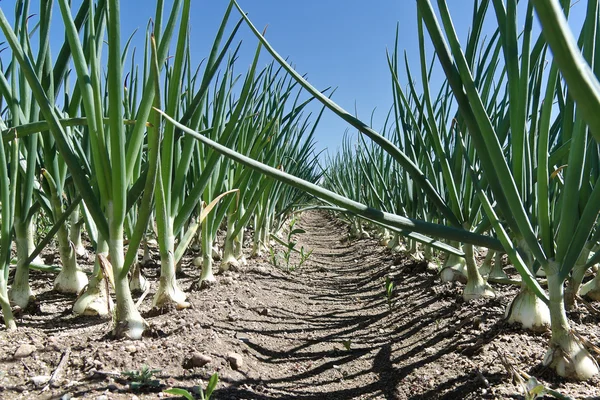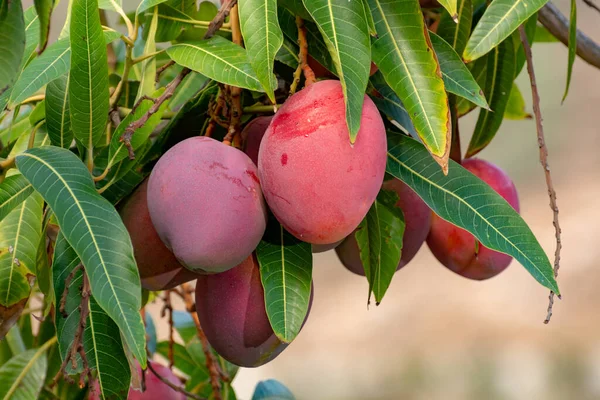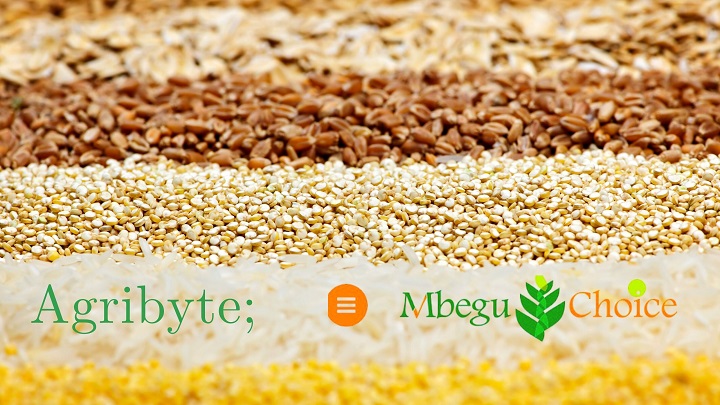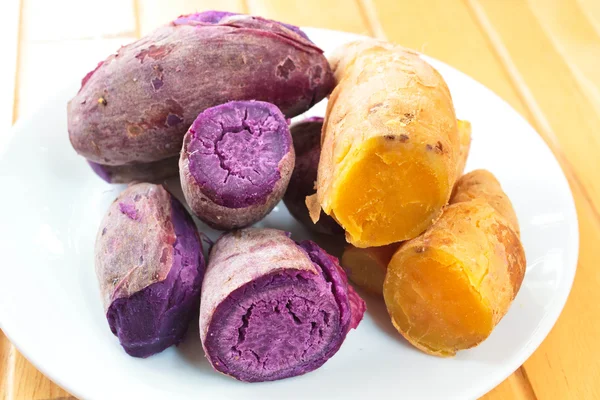Wondering if onion farming in Kenya is profitable? In this post, get an estimate of typical costs and profit estimates for growing high-yielding bulb onions such as Neptune F1. The analysis uses the costs and benefits method to know how much money you will make and use to grow an acre of the vegetable.
Why Onion farming?
Are there any benefits for growing onions? Onion farming can be a profitable and sustainable agribusiness. Some of the benefits you can get as a farmer include high profits, versatility, fast maturity, environmental sustainability, and nutritional benefits of this crop.
- Nutritional & Health Benefits; Onions are rich in Calcium, Iron, Potassium, Vitamin B6 & B9, and Vitamin E, and have many medicinal properties.
- Versatility; You can use the onions in a variety of dishes and cuisines including using it as an important spice for foods when cooked or served raw, and in making pickles or chutneys.
- Sustainability; Onions are a low-input crop, meaning they require fewer resources such as water and fertilizer compared to other crops.
Read Next: Which are the best onion varieties in Kenya?
- Cheap; onions are relatively easy to grow and require minimal maintenance and resources., It makes it a good crop for beginner and small-scale farmers.
Is there a Market for Onions in Kenya?
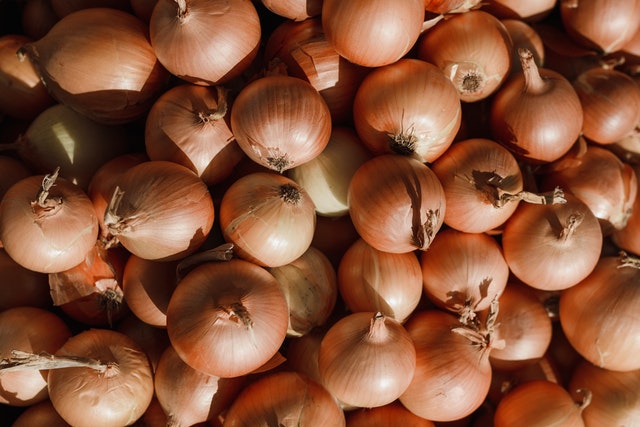
Onions are a key staple vegetable in Kenya. They have a steady demand and supply giving you opportunities for making money. In 2021, Kenya’s demand for onions reached 140,000 metric tons. It’s set to rise to 148,000 by 2026.
On the other hand, supply was 126,340 metric tons in 2021. It is expected to remain constant in the coming years. According to FAO, Kenya farmed 11,897 hectares of onions in 2021. The productivity or yield potential was 13.8 metric tons per hectare.
In 2023, wholesale onion prices range from KES 47.65 to KES 68.49 per kilogram, with farm gate prices varying based on location, season, and quality. Retail prices fluctuate in Kenyan Shillings, typically ranging from KES 62.5 to KES 90.28 per kilogram, potentially higher in supermarkets and specialty stores
Assumptions for Onion Farming in Kenya
Here are some assumptions made for profitable onion farming in Kenya. However, note that the factors that affect your profits can vary depending on the specific context and conditions of your farm.
- There is a reliable market for onions, with consistent demand throughout the year.
- The farmer has access to sufficient resources, including land, labor, and capital, to grow and harvest the onions.
- The farmer has the necessary knowledge and skills to grow and manage the onions effectively, including knowledge of fertilizers, herbicides, and other inputs.
- The farmer can manage the costs of production, including the costs of inputs such as fertilizers and herbicides, as well as labor costs.
- The weather conditions are favorable for onion farming, with sufficient rainfall and sunlight.
- The farmer can effectively manage pests and diseases that may affect the onions.
Revenues for onion farming in Kenya
How much money can you make for growing onions per acre in Kenya? Your sales revenue is a product of your yield and average price.
The average onion yield per acre in Kenya is 20 tons. On the other hand, the average farmgate price of onions is Ksh 40 per Kg in Kenya’s rural markets.
Your total income would be Ksh 800,000 per acre. Your income can go higher if you manage to get higher yields or high prices using contract farming.
What are the Costs for onion farming in Kenya?
According to this analysis, it will cost you Ksh 125,000 to grow an acre of red onions in Kenya. The cost of farming onions per acre includes land acquisition, installations, soil test, seed acquisition, nursery establishment, sowing, nursery management, basin irrigation, fertilizers, manure, chemicals, labor, water, and other costs. In this comprehensive farming guide, learn how to grow the best quality onions in Kenya. It breaks down each cost and requirements for each.
Land Hiring Costs
If you do not own some land, you can lease or hire some for onion farming projects. The cost of leasing an acre for onion farming in Kenya ranges from Ksh. 7,000 to Ksh. 30,000 per year, depending on the location. The best areas for onion farming in Kenya are Karatina, Oloitoktok, Naivasha, Kieni, Emali, Mai Mahiu, Nyeri, Nakuru, Narok, and Kinangop. In Tanzania, onions are grown in Mang’ola, Singinda, Njombe, Iringa, and Morogoro.
Below are the optimal ecological requirements for growing bulb onions:
- Altitude up to 1,900 meters,
- Well-distributed rainfall of 500-700 mm,
- Temperature range of 15-30°C,
- Fertile and well-drained soil with a pH range of 6.0-6.8,
- Proper moisture management.
Land Preparation
To prepare your farm for onion farming, you should start by clearing the land of any debris or vegetation. Then, you need to prepare the soil by ploughing or digging deep into the bed. Consider a first and second harrowing to remove any lumps.
A new onion farming method is to create raised beds. You can lay drip irrigation lines to prevent seeds from being washed away by rain or irrigation water.
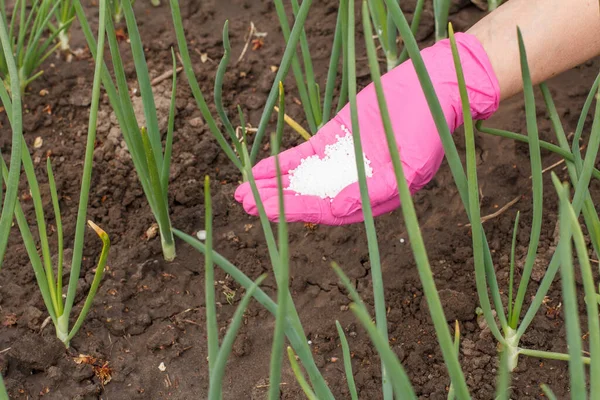
The other processes needed in your land preparation are soil testing and basal fertilizer application. Consult a reputable soil testing company such as Cropnuts or KARLO for soil testing. It will inform your soil PH, available nutrients, and fertilizer needs.
Onion seed variety selection
The next step is looking for high-quality seed or seedlings for your farm. choose high-yielding options such as Jambar F1, Red Pinoy F1, and Red Creole. These varieties are known for their high yield and good quality. For a comprehensive guide, see some of the best onion varieties in Kenya here.
You can buy clean seedlings from a good propagator. The price of onion seedlings in Kenya ranges from Ksh. 1 to Ksh. 5 per seedling. The cost varies depending on the supplier and location.
Setting up an onion nursery
To set up an onion nursery, you need to prepare the soil by removing any lumps and digging deep into the bed. The recommended onion seed rate in Kenya is 0.8-1.2 kg of fresh onion per acre. Onion seedlings take around 50-70 days to mature before transplanting. The seedlings should be around 6-8 inches tall and have three leaves before transplanting
- Prepare beds that are a maximum of 1 meter wide and incorporate well-decomposed compost or farmyard manure (20 kg/m2) and add DAP/TSP (20 g/m2).
- Make rows about 15 cm apart, drill the seed thinly in 1 cm furrows, and cover lightly with soil and mulch.
- Germination takes 7-10 days.
- Irrigate the nursery bed regularly.
- After the seed emerges, remove the mulch.
- Prepare a raised cover.
- Manage weeds, pests, and diseases.
Transplanting
To transplant onions, wait until the seedlings are 6-8 weeks old or have 3-5 well-formed leaves and a pencil-thick base. Transplant the seedlings in 2.5-3 cm deep trenches at a spacing of 30 cm between rows and 8-10 cm between plants. Before transplanting, irrigate the seedbed and the field well a day before.
Carefully pull out the seedlings to avoid damage, cut off 50% of the green tops to hasten take-off, and don’t bury onion sets more than one inch under the soil. Use healthy seedlings that are free from pests and diseases and harden them off by reducing watering and shading before transplanting.
Fertilizer and Manure application
Looking for the best fertilizer for onions in Kenya? Bulb Onion is a heavy feeder and does well in soils with high organic content (manure). It will also require the application of planting and top-dressing fertilizers. For this, use the soil test analysis. Below are the common recommendations for fertilizer and manure application per acre in Kenya.
- Basal Application: Broadcast 10-16 tons of manure/compost per acre and work it into the soil (incorporate) using a hoe. Apply at least 1-2 weeks before transplanting the Bulb Onions. Onions respond very well to well-decomposed organic manure.
- Planting: Apply 200-300 kg/acre of DAP/TSP at planting. Place the fertilizer in a band 5-7 cm below the seed.
- Topdressing: Apply 200-300 kg/acre of CAN/Urea 4-6 weeks after planting. Place the fertilizer in a band 5-7 cm away from the plant
Irrigation
To provide ample moisture, consider light, and frequent irrigation. Excessive moisture must be avoided during the growing stage, while a substantial amount of water is needed during the bulbing stage. Watering should be reduced or discontinued towards bulb maturity.
Lighter soils need more frequent water applications, but less water applied per application. Increase the water application as plants and roots increase in size. Proper moisture management is important in alleviating “Pink Root” problems, general root health, and vigorous bulb growth. Drought stress will cause the splitting or formation of double/multiple bulbs
Weed Control
Timely weeding is recommended to prevent competition for nutrients and water. Weeds should be removed as soon as they appear, and regular weeding should be done to keep the field weed-free. The use of herbicides should be minimized, and if used, the instructions should be followed carefully. It is also important to avoid damaging the onion plants while weeding. Weeds should be removed from the field to prevent reseeding.
Pest Control
Pest damage can cause a reduction in the quality and quantity of onion yields. Onion thrips and onion flies are the major pests of bulb onion farming in Kenya. To control them, use integrated pest management (IPM) practices. They which include
- Cultural control methods include crop rotation, planting resistant varieties, and timely weeding.
- Biological control methods involve the use of natural enemies such as predators and parasites to control pests.
- Chemical control methods should be used as a last resort and should be applied according to the instructions on the label.
Disease Management
The common diseases of bulb onion farming are pink root, downy mildew, and white rot. Others are purple blotch, rust, and neck rot. You can use cultural practices such as crop rotation, seed treatment, and proper irrigation and drainage to prevent and control diseases. use of disease-resistant varieties and the removal and destruction of infected plant material prevents the spread of diseases. Crop rotation involves planting different crops in the same field to reduce the buildup of soil-borne diseases.
Harvesting
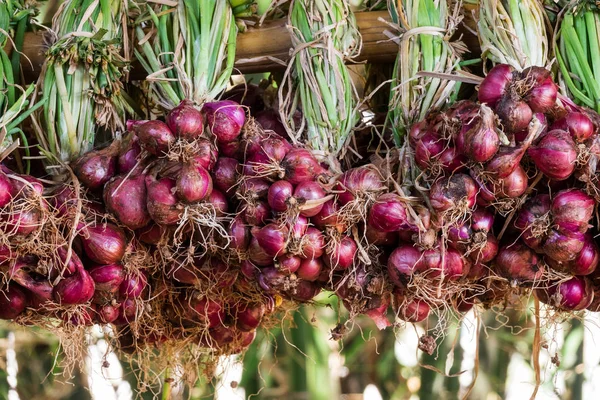
Bulb onions in Kenya mature in 90-150 days after transplanting. The maturity period will depend on the variety. To know if your onions are ready for harvesting, look at the following indicators.
- Leaves collapse or over 75% of the tops of the crop have dried and fallen over.
- The leaf tops begin to discolor, bend, and dry towards the ground.
- Sheath leaves surrounding the bulbs become thinner.
You can harvest onions by pulling them out of the ground by hand or using a fork. Take care not to damage the bulbs.
Value addition and Storage
Drying, sorting, grading, and storage are common value-addition methods that onion farmers use.
Drying; After harvesting, the onions should be left to dry in the sun for a few days to reduce moisture content and improve storage quality. The drying process is complete when the stalks are completely dried out, and the outer layers of the onion are crisp and dry.
Sorting; The bulbs with thick necks, bolted onions, injured onions, decayed onions, doubles, and small bulbs are removed.
Grading: grading is done based on size. Onions are put into three grades: large, medium, and small.
Storage; Bulb onions should be stored in well-ventilated containers such as onion nets, crates, and containers to prevent spoilage.
Marketing
onions in Kenya are marketed through various channels, including local farmers’ markets, supermarkets, and wholesale markets. Farmers can also sell their onions directly to consumers through roadside stands or online platforms. To increase sales, farmers can promote the quality and origin of their onions, offer competitive prices, and provide excellent customer service.
New trends for marketing onions in Kenya are online marketing and contract farming. Farmers are using social media and e-commerce sites to attract buyers. Others prefer contracts to lock prices and quantities of onions to their buyers.
How Profitable is Onion Farming in Kenya?
According to this example, onion farming in Kenya is very profitable. You can generate an income of Ksh 800,000 per acre. On the other hand, it costs around Ksh 300,000 to grow an acre of onions in Kenya.
The profits from growing one acre of hybrid onions would be Ksh 500,000 (Ksh 800k-300K) from a yield of 20,000 kgs. The profitability of onion farming fluctuates based on several variables such as crop yield, market conditions, cost of production, and location.
